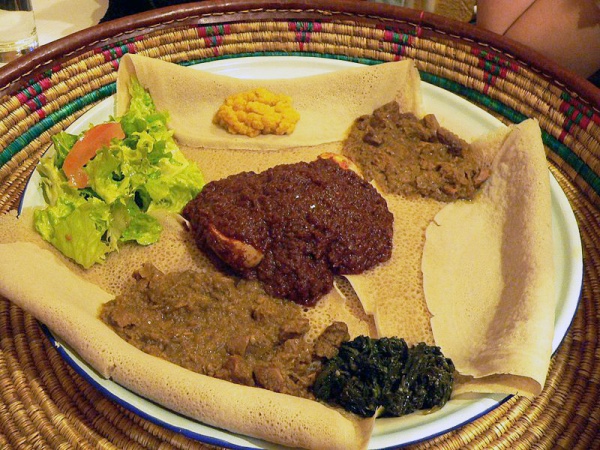Facts About Injera
Injera is a beloved traditional flatbread that serves as a cornerstone of Ethiopian and Eritrean cuisine. This sour, fermented bread is made from teff flour, a unique grain that flourishes at specific elevations with adequate rainfall. The process begins by mixing teff flour with water and a fermenting agent called ersho, which is rich in particular bacteria and yeasts. After allowing the batter to ferment for a couple of days, it is cooked into large, pancake-like flatbreads on a round griddle.
In these cultures, injera is not just food; it also functions as a utensil and a plate. It forms the basis for various stews and salads, absorbing flavors and turning each meal into a communal experience. Injera is essential in daily meals and carries symbolic significance, with different types of grain contributing to regional variations. Beyond Ethiopia and Eritrea, variations of injera can also be found in neighboring East African countries like Djibouti, Somalia, and Sudan.
In the United States, injera has gained popularity thanks to Ethiopian immigrants. There is even a movement to grow teff domestically to make this cultural staple more accessible. Injera is not just food; it is an integral part of the culinary traditions and daily life in Ethiopia, Eritrea, and beyond, showcasing the rich flavors and communal spirit of these cultures.

 Ethiopia
Ethiopia